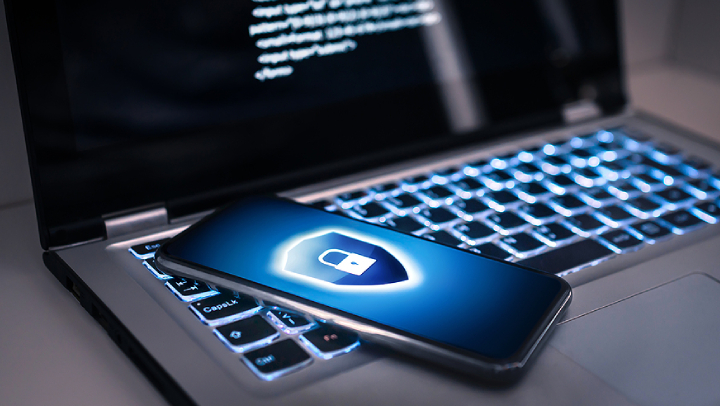Advantages Of A PMP Certification In Today’s Job Climate

When it comes to securing a job in today’s job climate, some might find it challenging to prove to employers that they are standout individuals compared to other candidates. It is difficult for job searchers to battle their way to employers, especially when most candidates have similar work experiences or educational backgrounds.
Despite being considered some of the top professionals in an organisation, project managers might still struggle to find a way to upskill themselves. The Project Management Institute (PMI) recognises Project Manager Professionals (PMPs) as industry-recognised project managers, and obtaining a PMP certification is one of the best ways to validate that you are highly skilled in your field. There are many advantages to enrolling on PMP training courses and obtaining the PMP certification.
Read on as we look into the advantages of a PMP certification in today’s job climate.
Toughens your practical skills
One of the most significant difficulties as a project manager is managing different employees with different attitudes and skill sets. Therefore, being a fully equipped project manager is essential. Obtaining a PMP certification enables you to toughen your practical ability to handle such situations, as the PMP certification exam will require intensive preparation. Upskilling and reskilling have become essential in today’s job climate, and holding a PMP certification would prove your determination to improve and upgrade yourself consistently with time.
Fast career advancement
Undoubtedly, project management is one of the most sought-after positions in an organisation. While the tasks are challenging, greatly benefit an individual’s career. Project managers usually have a high-status reputation, meaning it might be difficult to advance your profession. However, PMP certification can step up your career in no time. By passing the exam, you’ll gain international accreditation, enhancing your marketability and acceptance worldwide. As a result, you’ll have many opportunities to advance in your current role or land a better position.
Recruiters will see you as a priority
The PMP certification is a globally recognised token of excellence in this field. Employers would prioritise PMP certificate holders as they would be deemed high-quality individuals who have already tried and tested. The certification is global, meaning the skills required can translate across all projects and industries.
Greater financial compensation
PMP has consistently been the highest-paid IT certification, and the trend of growing salaries is predicted to continue to grow. Many highly regulated organisations require their employees to hold the PMP certification, offering a higher salary rate to certificate holders as compensation. Surveys have suggested that PMP certificate holders earn more than their non-certified counterparts.
Conclusion
The PMP certification is highly regarded among employers and project managers. If you’re looking for ways to advance your skills or impress employers, obtaining the PMP certification will help you do just that.
Consider enrolling in a PMP training course that would help you to possess project management knowledge, skills, and experience to complete your projects. Scrumic offers extensive project management classes, including PMP and PRINCE2 certification courses. You will be guided on the fundamentals of project management by our qualified instructors and equipped with the skills you need to succeed. We also offer many other courses to help improve your organisation, such as funded CISSP training and ITIL 4 Foundation in Singapore. Contact us today to find out more!
- Published in Uncategorized
Ransomware: How To Reduce Damage When Facing An Attack

According to recent studies, organisations in Singapore are among the most targeted in the world when it comes to ransomware attacks, with an estimated 65% already hit by at least one. In a survey released earlier this year, cybersecurity firm Cybereason found that Singapore companies pay an average of S$1.5 million to cybercriminals.
Since the pandemic, Singapore companies increasingly rely on digital infrastructure, and cybercriminals have found it easier to target those who fail to encrypt and secure their data properly. Here’s what you need to do when faced with a ransomware attack.
Do NOT panic
One of the most crucial steps is not to panic. Panicking leads to mistakes that can be irreversible and cause even more damage to your organisation. It would be best to act quickly and methodically, calmly executing your company’s incident response (IR) plan. Inform your internal legal and public relations departments so they can start to plan. You should notify all stakeholders that you will establish a more formal communications and reporting system when you acquire more information.
It would help if you used a designated contact to establish communication and updating procedures for each business sector. For instance, commit to providing a situation update to all pertinent team leads every few hours. This is crucial as it would prevent any miscommunication or confusion, stop individuals from asking for updates all the time, and keep your team focused on containment.
Activate incident response (IR) plans
Firstly, isolate your systems and stop the spread. If the incident has already been proven to be widespread, you may decide to impose network-level restrictions, such as isolating traffic at the switch or firewall edge or temporarily shutting off the internet connection. You could also isolate the affected systems at the device level by cutting off the Ethernet or the Wi-Fi if the incident’s scope has already been more limited and affected only a few systems. To prevent the loss of forensic evidence, keep all systems switched on whenever possible. Additionally, remember that if you accidentally tip the attackers off, they can become inactive, making it more challenging to determine the full breadth of the attack.
Next, you should identify the variant of ransomware used. Each ransomware variation has its own publicly available documentation of many tactics, methods, and procedures (TTP) of an assault. Knowing which assault you are dealing with can help you get information on persistence, where to look for the danger, and how it spreads.
Then, you should identify the initial access. This will make it easier for you to plug the security vulnerability. Phishing, edge service attacks (such as those on Remote Desktop services), and illegal credential usage are typical first access routes. Drive-by compromises, vulnerabilities in publicly accessible software and websites, portable media, device upgrades, and supply chain breaches are some more initial access routes. However, this could be challenging and require experts or consultants’ help.
It is possible that your attackers still have a presence in your network even after an assault has ended. It would be best if you located any malware that is still active or persistent remnants that are still in contact with the command-and-control (C2) server. Disable any privileged or non-privileged accounts that your attackers have compromised, including Active Directory (AD) accounts. Make sure no new rogue accounts are being created as well. It is advisable to check other AD components, such as Group Policy Objects (GPOs), to see whether anything has been added or changed. Attackers frequently employ this strategy to spread the ransomware payload to all networks. It is vital to make a note of your findings before acting. You can warn the attacker by acting, which might prompt them to undertake a much more severe assault. You might be unable to fully assess the consequences of the data breach or retrieve your lost data.
Ransomware attacks sometimes exfiltrate your data in addition to encrypting your files. By threatening to publish things like confidential or humiliating material online, they will enhance the likelihood that you will pay the ransom. It is, therefore, essential to determine whether the attackers exfiltrated any data. On your firewall edge devices, keep an eye out for any indications of data exfiltration, such as significant data transfers. Additionally, keep an eye out for strange communications from servers travelling to cloud storage programs like Dropbox or AWS. Along with firewall logs, your cloud access security broker (CASB) solution will be your primary source for this information if you have one.
Recovery and post-incident review
The most crucial step for recovery is locating the backups and determining if they are available. Attackers will typically try to wipe out or infect the backups, so be sure to scan and check for integrity before attempting to restore the data.
If you cannot restore any backups, you may consider paying the ransom to retrieve your data. It is typically frowned upon, but if you are doing so, be sure to hire security experts with the necessary skills to negotiate first. However, keep in mind that negotiating takes time and should only be done to retrieve the data, with no guarantee that the attackers will not delete or release the data publicly.
Once confident that all the malware has been identified, you may start sanitising your systems. However, it may be better to build a new, cleaner and safer environment to migrate to. In the new environment, ensure that proper security controls are installed, and best practices are followed to reduce the risk of reinfection.
Lastly, conduct a post-incident review to understand what went right and what to improve on. This ensures that your reaction and recovery skills are always improving.
Final Word
Whether you have experienced a ransomware attack or not, it is best not to take this lightly. Build or reinforce your incident response (IR) plans and business continuity plans (BCP) to adequately protect your organisation from any malicious attacks.
If you’re interested in learning more about cybersecurity or are planning to upskill your employees, we are here to help! At Scrumic, we offer courses like our NSE 4: FortiGate Security and other CISSP courses in Singapore. Individuals passionate about cybersecurity can also get funded CISSP training with us. Contact us today to get started on your cybersecurity journey!
- Published in Uncategorized
How To Select A Network Firewall For Your Organisation

As your business grows and expands, your security and network requirements might also change. Although you might not be able to foresee what kind of changes your business will undergo and the corresponding configuration to take up, it is still possible to invest in the right firewall ahead of time.
The ideal firewall should ease the burden of managing many products, save expenses and cycle times, and improve the efficiency and cost-effectiveness of managing your network infrastructure, helping your company be ready for expansion. However, with so many options available in the market, how do you choose the right one? Read on to discover some critical considerations.
1. Matching the throughput with your business needs
Throughput demands are constantly shifting. Today’s minimum need is yesterday’s ultraperformance. Bandwidth demands inevitably grow as user numbers, devices, and application sophistication rise. Your firewall must swiftly recognise apps, expand to handle growing network traffic needs, and protect them – especially now that, according to Google’s most recent Transparency report, 95% of all traffic is encrypted. The secret to finding malicious actors hidden in those encrypted channels is to decrypt SSL, including the most recent TLS1.3.
2. Type of inspection you need
Modern firewalls need to conduct specialised inspection, analysis, correlation, and response duties; these jobs include performing a deep examination of encrypted traffic, which may easily overload generic CPUs. Generic CPUs were never designed to do these things. Similar to how specialised GPUs are needed to generate rich video streams for enhanced graphics, more processing power is required to support the complex tools and techniques utilised by today’s hackers. Most firewalls cannot provide the specialised and demanding procedure to analyse streaming traffic in real-time.
The second problem is longevity. A firewall should be chosen as a long-term investment. However, even though most organisations anticipate their technology to last two to four years, data shows that over half purchase extra tools and workarounds every one to two years to either address holes in their current solution or make up for nagging performance concerns. The best rule of thumb is to estimate your bandwidth needs for the next three years, double that figure by two, and then choose a firewall that can easily secure that amount of traffic.
3. Speed and effectiveness in analysing threats
The crucial point of inspection for all network traffic is your firewall. Performance is also vital in the application-centric corporate world of today. Unfortunately, not many firewalls were created to fulfil the demands of modern small enterprises for digital performance. Almost always, the expense of getting one quickly is exorbitant.
The device’s central processing unit (CPU) and how well it works with its underlying operating system determine performance. Its CPU’s ability to support the specialised duties of high-performance security inspection, or if it was constructed around generic processors being expected to perform tasks for which they were not intended, is a crucial factor.
Non-negotiables for your firewall
While most firewalls come with nice-to-have features that providers advertise to set their product apart, you should pay attention to the essentials. None of them is worth your time or money if they don’t satisfy your needs. Your firewall must at the very least provide:
- Decryption
- Content Filtering
- Advanced Threat Protection
- Sandboxing
- Endpoint Integration
- IoT Visibility & Control
- Secure SD-WAN
- Remote Access
Final Word
Choosing the proper firewall ensures that your security is effective now and will safeguard and support your company’s operations in the future – even as technology and business strategies evolve. Furthermore, partnering with a provider who comprehends your requirements in both the short and long term promotes longevity, reduces needless workarounds, and prevents future debates about rip and replace that can cause a firm to fail.
If you have a passion for firewall policies and configurations or are thinking of upskilling or reskilling, you may consider enrolling in our NSE 4: FortiGate Security or NSE 4: FortiGate Infrastructure course, which will provide a solid foundation for basic network security. At Scrumic, we offer a wide array of courses ranging from PMP training to cybersecurity. We also provide funded CISSP training and ITIL 4 Foundation in Singapore. Contact us today to get started!
- Published in Uncategorized
6 Best Practices For Secure Network Firewall Configuration

An effective network firewall is one of the most vital security tools you can have. Administrators may find it challenging to configure network firewalls because they need to strike a balance between security and performance.
In addition to protecting your network against external threats, your firewall configuration must also prevent malware from exfiltrating sensitive data from your network. The network must also be protected from any potential threats in the future.
Read on to discover the six best practices for secure network firewall configuration.
1. Block traffic by default and monitor user access
The best firewall configuration practices can’t guarantee security from malicious actors, even when IT teams follow them closely. The solution to this problem is to set the firewall to block traffic by default. Unknown traffic being blocked from accessing the network makes it more difficult for unethical hackers to penetrate it.
2. Follow the principle of least privilege
An organization’s network may need to be accessible to some people for legitimate reasons. Cybersecurity teams do not need to give unlimited access to authorized users, but organisations can configure their network firewall security accordingly. Users should have access only to the files and tools they need to do their jobs.
The least privilege principle will ensure that all types of firewalls can provide better network security. Third-party vendors, for example, require access to information about the products they purchased and where to send them. The vendor does not need any sensitive data, such as customer payment records.
3. Establish a firewall configuration change plan
There are many reasons why you need to update the firewall on your network from time to time. Updates are necessary to ensure a robust firewall can withstand new threats. Unplanned configuration changes can create security loopholes in your network. For the change management process to run smoothly and securely, it is vital to have a plan.
4. Update your firewall software regularly
Ensure that your firewall software is updated regularly. It is common for firewall vendors to release software updates on a regular basis. In these updates, minor changes are made to the software to address any potential security threats. To keep your network secure, ensure your firewall software is constantly updated and that there are no loopholes in your system that could compromise it.
5. Open the firewall ports that users expect
Organisations need to detect which ports users might expect to find open when they try to access networks. A few factors influence what ports the IT team opens, such as the type of servers and databases used by the company and the services and data users access.
6. Conduct regular firewall security audits
A security audit ensures that the firewall rules comply with the organisation’s and external security regulations. Unauthorized firewall configuration changes can cause non-compliance. To ensure no unauthorized changes have been made, administrators and IT security staff should conduct regular security audits.
In addition, this will keep you informed of any changes made to the firewall and alert you to any potential risks associated with these changes. A security audit is essential when a new firewall is installed, a firewall migration occurs, or when firewall configuration changes are made in bulk.
Conclusion
Learning the best practices for secure network firewall configuration is an important step in ensuring network security. If you’re interested in taking a step further in learning more about firewall practices and policies, you may consider enrolling in Scrumic’ upcoming FortiGate Infrastructure & Security courses in December 2022 and enjoy up to 60% off course fees.
The course dates are as follows:
NSE 4: FortiGate Infrastructure: 19 – 20 December 2022
NSE 4: FortiGate Security: 21 – 23 December 2002
At Scrumic, we offer a variety of courses ranging from funded PMP training to cybersecurity. We also provide ITIL 4 foundation training online in Singapore. Contact us today to get started!
- Published in Uncategorized



